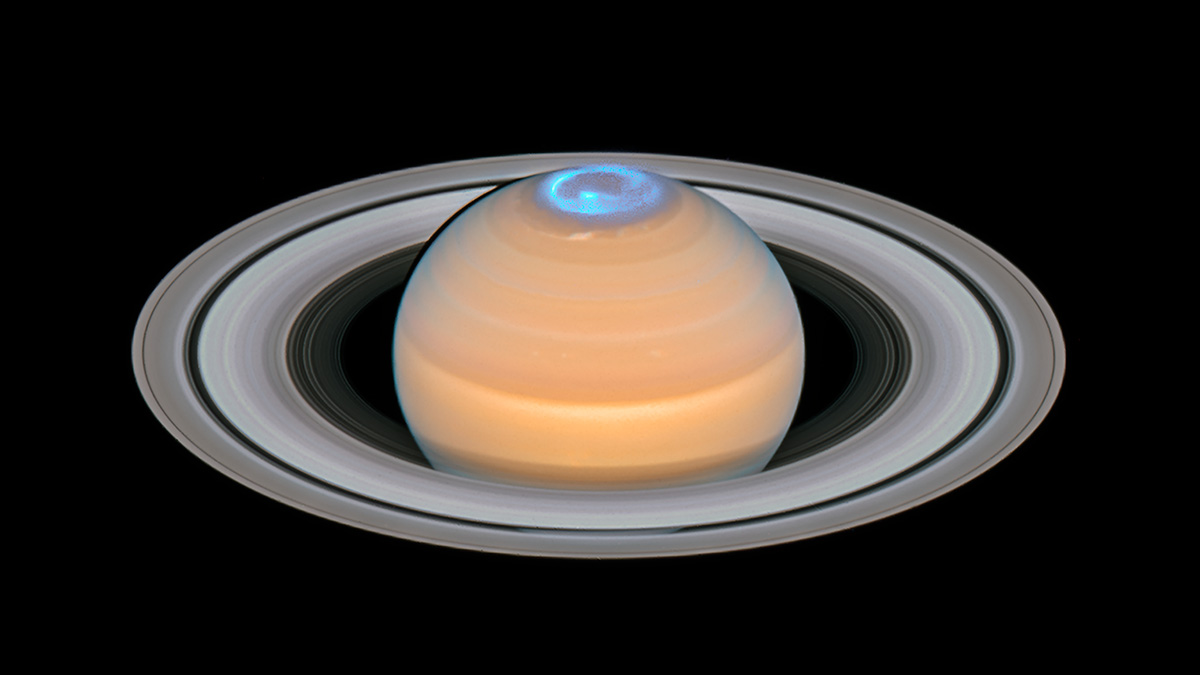Saturn has fascinated humans for millennia. But as spacecraft began visiting this ringed world in the 1970s and making measurements of its multihued atmosphere, a puzzling mystery emerged: The length of a Saturnian day wasn’t constant—it varied over time and even differed between the planet’s northern and southern hemispheres. Now, by detecting powerful winds that swirl in a complex pattern near Saturn’s north pole, researchers have uncovered the cause of Saturn’s variable rotation rate.
How Long Is a Saturnian Day?
When NASA’s Voyager 1 and 2 spacecraft flew by Saturn in the early 1980s, one scientific objective of the missions was to measure Saturn’s rotation period. Using instruments on the spacecraft sensitive to radio signals, Voyager scientists calculated the length of a Saturnian day to be roughly 10 hours and 39 minutes. But just 2 decades later, when the Cassini spacecraft rendezvoused with Saturn, its instruments, also sensitive to radio waves, recorded a rotation period that was roughly 6 minutes longer. “We couldn’t really nail down a period at Saturn based on these radio observations,” said Bill Kurth, a physicist at the University of Iowa in Iowa City and a member of the Voyager and Cassini science teams.
Since then, researchers have put forth a variety of models to explain why the length of a Saturnian day might appear to vary. Some proposed that changes in the planet’s magnetosphere—an extended, bubble-like sheath around Saturn within which the planet’s magnetic field dominates the Sun’s—are responsible; another suggested that processes more local to the planet, specifically, winds swirling within its upper atmosphere, might be the culprit. “There [are] two schools of thought,” said Nahid Chowdhury, a planetary scientist at the University of Leicester in the United Kingdom.
Looking North
In 2017, Chowdhury and his colleagues observed Saturn to test the theory involving atmospheric winds. The researchers used one of the twin 10-meter telescopes at W. M. Keck Observatory, located on the Big Island of Hawaii, to observe the planet’s north pole. (Saturn’s south pole isn’t currently visible from Earth—it’ll come into view in several years.) The team focused on infrared emission from H+
3, a hydrogen ion composed of three protons and two electrons.
By recording how spectral lines of H+
3 were subtly shifted in wavelength because of the Doppler effect, the scientists were able to infer how Saturn’s upper atmosphere was moving. They found that it was churning rapidly—at more than 7,000 kilometers per hour—in a manner consistent with two enormous, spinning vortices. These structures, each measuring tens of thousands of kilometers in diameter, were, in fact, predicted several years ago by scientists seeking to explain Saturn’s variable rotation rate.
An Atmospheric Culprit
These winds distort Saturn’s magnetic field and in turn change the timing of the radio signals that scientists have used to measure the length of a Saturnian day, Chowdhury and his colleagues proposed. That solves a long-standing mystery, said Chowdhury. “Finally, we know it’s for sure that it’s the atmosphere which is driving the change in rotation rate.” These results were published in December in Geophysical Research Letters.
“It’s a great ending to a very long and mysterious story.”
It’s rewarding to see these findings, said Margaret Kivelson, a space scientist at the University of California, Los Angeles not involved in the research, who helped propose the existence of Saturn’s polar vortices. “They seem to support some of the speculations that my colleagues and I made.”
“It’s a great ending to a very long and mysterious story,” added the University of Iowa’s Kurth. “This is the way science works. You see something that you don’t understand, you put together a model that explains it, and then you go off and make measurements.”
—Katherine Kornei (@KatherineKornei), Science Writer

